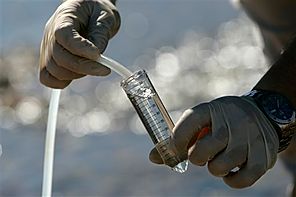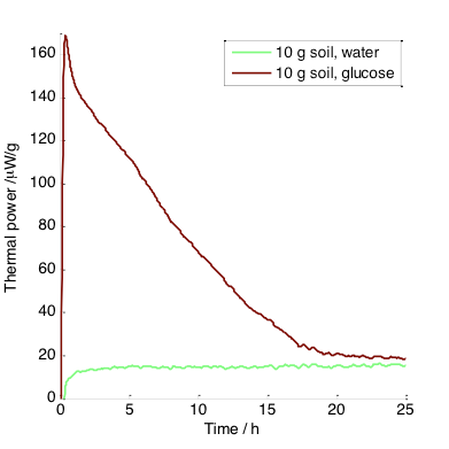Isothermal Calorimetry in Environmental Sciences
Gain insight into applications such as potable water treatment, sewage sludge digestors, soil characterization, bio-fermentation, or insect growth
Overview

Environmental Science covers a wide variety of natural elements and associated processes, and isothermal calorimetry is an ideal tool to assess the wide spectrum of chemical and biological phenomena in our environment, e.g. biological soil characterization, the effectiveness of water treatment (both potable water and sewage treatment), fungal activity in forests and soils, fermentation of biomass, the metabolism of insects, and many others. Isothermal calorimeters provide a wealth of information on the kinetics of the process under study. They measure biological and chemical activity directly and continusouly and can even do so over an extended period of time of days or weeks, when other analytical methods often only provide a snapshot at a given point in time.
Calmetrix calorimeters are designed to accommodate large sample sizes suitable for inhomogeneous substrates such as soil, sludges, tree bark, or insects.
Typical uses of isothermal calorimetry in environmental science are:
-
Potable water purity and treatment efficiency
-
Determine the biological activity before and after water treatment
-
Monitor the quality of water reserves in lakes, rivers and water storage tanks
-
Assess the efficiency of different treatment methods, e.g. chemical sterilization, UV treatment, filtration and different types of membranes
-
Use reporter bacteria to determine nutrient content in water
-
-
Efficiency of wastewater treatment systems
-
Assess the efficiency of biological treatment systems in digestors
-
Characterize sewage sludges
-
Test the suitability of sewage sludge ash or ashes from other incinerated products in beneficial use, e.g. as a cement replacement
-
-
Soil studies
Measures biological activity in soils - often done in conjunction with glucose amendment
-
Fermentation of biomass
Follow the kinetics of fermentation for biofuels or other uses
-
Metabolism of insects
-
Monitor growth and infestation of insects in wood
-
Study the effect of factors such as temperature, availability of food, or chemical treatment on insect growth rate.
-
Example: microbial activity in glucose amended soil

A common experimental procedure in soil science is to use addition of glucose to compare the biological activity of different soils. In this example, soil samples with and without glucose were tested at 25 °C. The soil was a mixed garden soil that had been sieved and kept at room temperature for about 1 week before the measurements. The measurement shows the thermal power of the natural soil (about 18 uW/g) and the effect of the glucose-amendment. Based on calorimetric curves, one can make an estimate of how much oxygen was consumed during the metabolic activity of bacteria in the glucose amended sample, and from there infer the soil efficiency. A detailed description on how to conduct such an analysis can be seen in the corresponding application note AN-E01.
